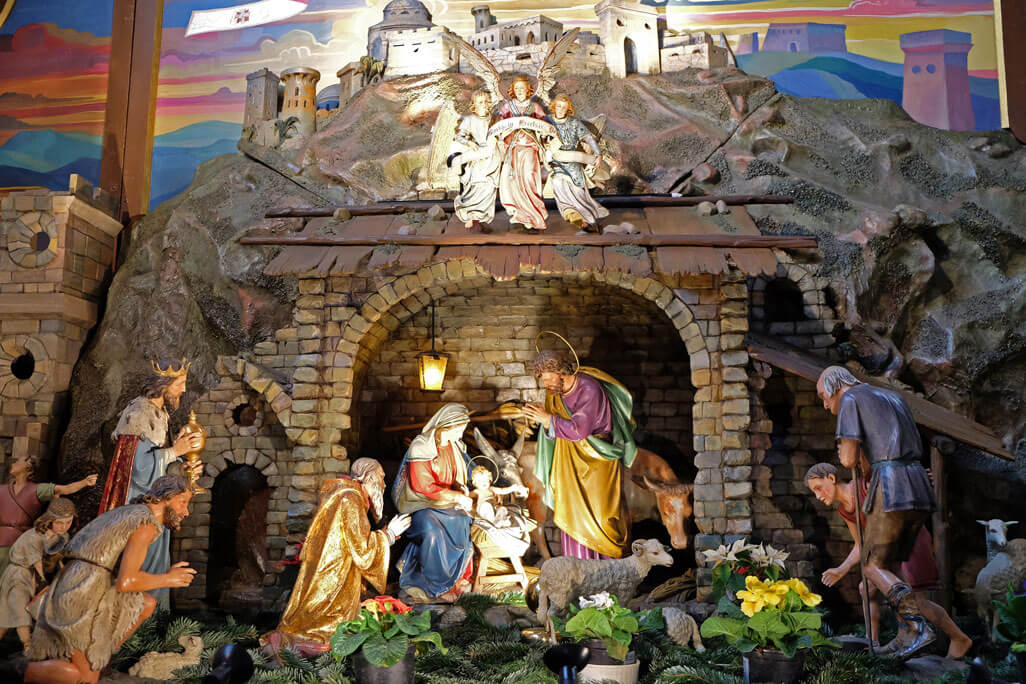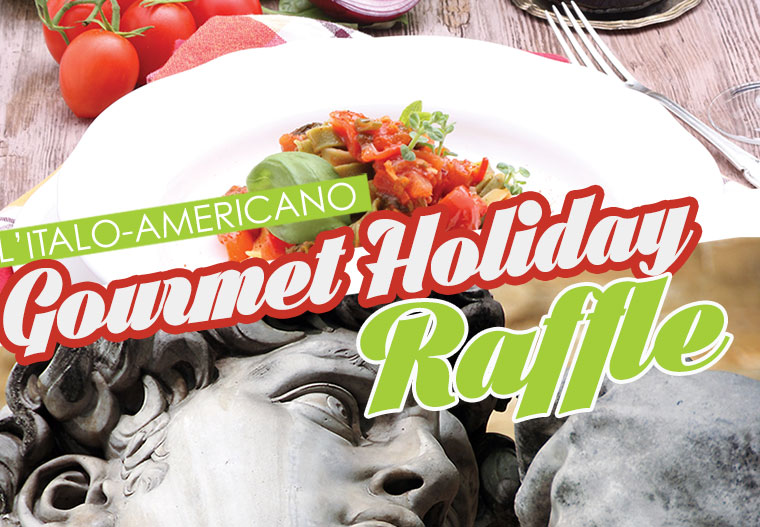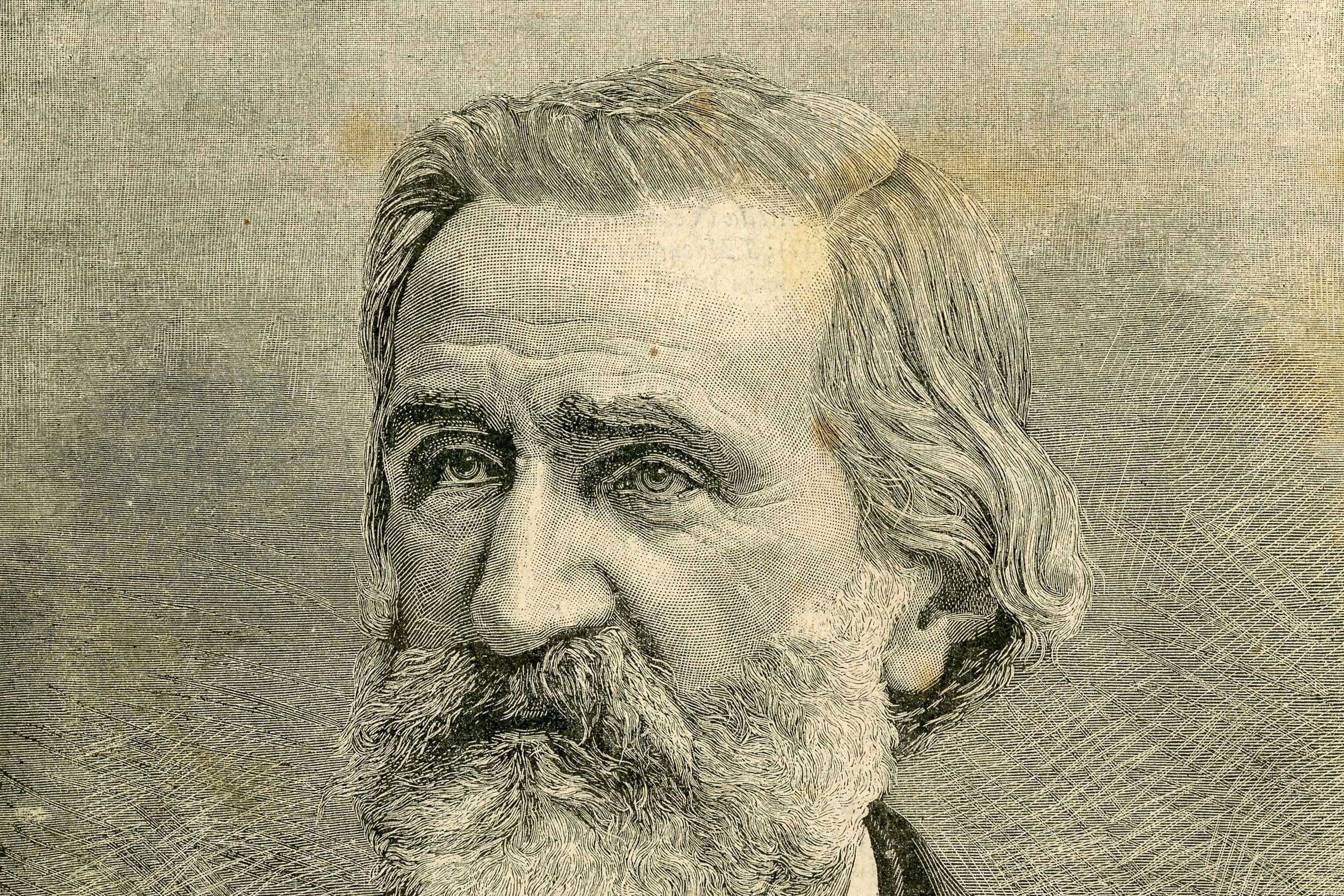The art of reproducing the nativity scene is linked to an ancient tradition in Italy. Three cities are particularly famous for their presepi: Bologna, Genoa, and Naples.
The Bolognese tradition dates back to the 13th century, and it is different from other nativity scenes realized in Italy because all characters are entirely hand carved, including their clothes. Various materials can be employed, from terracotta to paper, from wood to plaster, depending on the craftsman’s ability.
The Basilica of Santo Stefano in Bologna boasts the oldest nativity scene in the world, with full-size statues from the 13th century, and it is one of the biggest in the Country. The Basilica, also known as “The Seven Churches”, for centuries has received pilgrims on their way to Rome, Jerusalem, or Santiago de Compostela. This has inspired the production of sacred art and attracted many artists in the city, including sculptors and potters who realized innovative statues and figures for the nativity scenes decorating the churches.

Another peculiar feature of the Bolognese presepe is the presence of two typical characters: the Marvel and the Sleepyhead . The Marvel is usually a female figure representing those who are moved by the news of the birth of Jesus Christ, while the Sleepyhead is a sleeping character who is often placed aside and not fully aware of what is happening around him.
The Genoese school of the nativity scene is well-established and prestigious as well, thanks to the accurate craftsmanship and precius materials, from wood to ceramic or paper, used to finish off the figures’ details such as clothes and faces. The golden era for the Genoese tradition was the 18th century, when reproductions of the cave in Bethlehem and the nativity characters weren’t hosted only in churches but also in the houses of nobles and bourgeois, causing the proliferation of shops specialized in the notching of Genoese wood.
Today, many nativity scenes in Genoa can be admired all year long. Among them is one in particular, embellished with statues from the school of Anton Maria Maragliano (1664-1739), whose shop was one of the most famous in town. The setting is mainly urban and located in the Santuario della Madonnetta.
The scene is reproduced in an area of about one hundred square meters, and divided into five different parts. Three of them are set in an ideal 17th century Genoa, with all the typical caruggi, the dark and narrow alleys that still mark out the historic center. The other two parts on the sides are set respectively in the countryside and in Jerusalem, the cradle of Christianity. The meaning is to reunite in one city Genoa, the East, and the West through the Christian message.
The Neapolitan nativity scene, traditionally set in the18th century Naples, is characterized by terracotta shepherds. The use of terracotta had almost disappeared as a result of the introduction of plastics that guaranteed large scale production and lower prices. In 1969, the terracotta tradition and technique was restored by Nicola De Francesco.
In Naples, the turning point for this sacred art was the 17th century, when the scenario was expanded from the mere nativity cave to the profane world outside with the representation, for example, of taverns. The scene became pompous and detailed, while the characters became smaller. Then in the 18th century, Neapolitan nativity scenes experienced their golden era, once again moving from the churches where they were the object of religious devotion, to the homes of the aristocracy.
Giuseppe Sammartino, perhaps the greatest Neapolitan sculptor of that time and well-known for his Cristo Velato, was very skillful in shaping terracotta figures, and he established a veritable school of artists. Most of the figures of the famous Presepe del Banco di Napoli have been made by him.

Remarkable is the fact that in Neapolitan nativity scenes greater attention is placed outside the holy family group. Artists have always preferred to focus on secular elements as shepherds, street vendors, the magi, and animals. The Neapolitan sacred art is still alive and kicking, and its tradition is extremely popular in the city and in the whole Country during the Christmas holiday season. The renowned Via San Gregorio Armeno in Naples, also called Via dei Presepi, is a real tourist attraction which showcases the local presepe crafts. The most acclaimed example of a Neapolitan nativity scene is represented by Cuciniello’s, made between 1887 and 1889, and located at the Museum of San Martino.
Living nativity scenes are also very common in the Christian tradition. They consist in a brief live theatrical performance reproducing the birth of Jesus.
The first living nativity scene was made by St. Francis of Assisi in Greccio, near Rieti, in 1223. Since then, the tradition spread to the rest of Italy as well as in other Christian countries. The setting is not necessarily Bethlem, but often a presepe vivente gives the opportunity to show typical professions of the ancient times that don’t exist anymore.
Even if nowadays this sacred art is less strong than it was in the 18th century, Italians still love to make and decorate their own presepe at home. This tradition is preserved by immigrants who live far from their native countries, like Domenico Masdea from Tustin, California. Every December 1 since 2001, Domenico opens his garage to neighbors and curious guests to show them his own nativity scene. It takes him two months of work every year to complete and refine it. Some of the figures come directly from Italy. It is a hard job, but people always remain agape in front of the hundreds of pieces that compose his giant presepe.






























